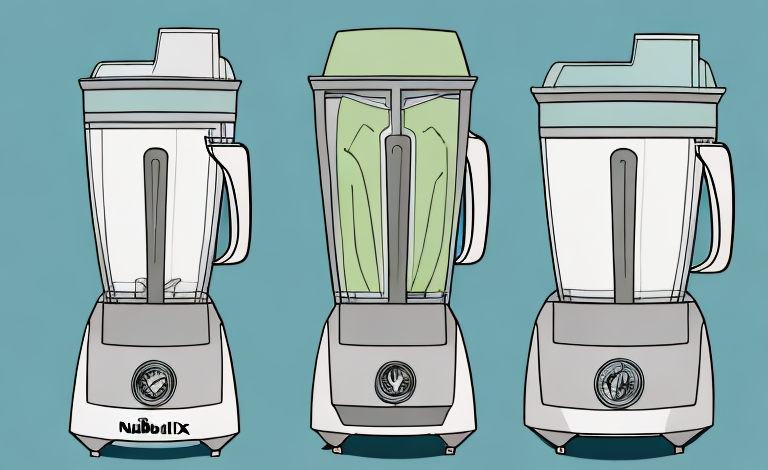As biometric technology becomes increasingly prevalent in modern devices, fingerprint sensors have become a common feature in smartphones and laptops to enhance security measures. However, sometimes you may experience trouble with your fingerprint sensor, which may warrant a closer inspection to determine if it is working correctly. In this article, we will discuss everything you need to know about fingerprint sensors, how to identify common issues, and how to troubleshoot accordingly.
Understanding how fingerprint sensors work
Fingerprint sensors are designed to identify and authenticate users by unique biological characteristics of their fingerprints. The sensor will take a digital image of the user’s fingerprint, and through the process of algorithms and pattern recognition software, will create a mathematical representation of the user’s unique print. This representation is stored by the device, which will compare any subsequent fingerprint scans to verify the user’s identity.
One of the advantages of using fingerprint sensors for authentication is that they are difficult to replicate. Unlike passwords or PINs, which can be easily forgotten or shared, fingerprints are unique to each individual and cannot be easily duplicated. This makes fingerprint sensors a more secure method of authentication for devices and systems.
However, there are also some limitations to fingerprint sensors. For example, they may not work properly if the user’s fingers are wet or dirty, or if they have a skin condition that affects the texture of their fingerprints. Additionally, some people may have difficulty using fingerprint sensors due to physical disabilities or injuries that affect their fingers.
Common issues with fingerprint sensors
There are several reasons why your fingerprint sensor may not be functioning as it should. Firstly, it may be a hardware issue, which could be caused by dirt, sweat, or damage to the sensor itself. Secondly, it could be due to software issues, which may occur when the device is undergoing updates or when the performance of the fingerprint sensor is affected by other applications running on the device.
Another common issue with fingerprint sensors is that they may not recognize your fingerprint due to changes in your skin, such as cuts, burns, or dryness. In such cases, it is recommended to add an additional fingerprint or to clean the sensor and try again.
Additionally, some users may experience issues with the accuracy of their fingerprint sensor, which could be due to the way they place their finger on the sensor or the quality of the sensor itself. In such cases, it is recommended to re-register your fingerprint or to contact the manufacturer for assistance.
How to troubleshoot a faulty fingerprint sensor
If you find that your fingerprint sensor is not working correctly, there are several troubleshooting steps you can take to diagnose and fix the issue. Firstly, you can try cleaning the sensor; use a microfiber cloth to wipe away any dust or dirt on the surface of the sensor. Additionally, you may need to delete and re-add your fingerprints to the device to ensure it is reading them correctly. If you continue to experience issues, contact the manufacturer or the device’s support team.
Another possible solution is to check if there are any software updates available for your device. Sometimes, outdated software can cause issues with the fingerprint sensor. You can check for updates in the device’s settings or by connecting it to a computer and using the manufacturer’s software update tool.
If none of the above solutions work, it is possible that the fingerprint sensor itself is faulty and needs to be replaced. In this case, you should contact the manufacturer or a certified repair technician to have the sensor replaced. Attempting to replace the sensor yourself can cause further damage to the device and void any warranty or insurance coverage.
Tips for maintaining the performance of your fingerprint sensor
To ensure that your fingerprint sensor is working optimally, there are various tips you can follow. Firstly, ensure that your hands are clean and dry when using the sensor. Make sure that you have added your fingerprints correctly to the device to ensure that it is storing them accurately. Finally, make sure that you keep your device up to date with the latest software updates and ensure that the device has enough storage space to operate effectively.
Additionally, it is important to avoid exposing your fingerprint sensor to extreme temperatures or direct sunlight for prolonged periods of time. This can cause damage to the sensor and affect its performance. It is also recommended to avoid using harsh chemicals or abrasive materials to clean the sensor, as this can cause scratches or other damage. Instead, use a soft, dry cloth to gently clean the sensor surface. By following these tips, you can ensure that your fingerprint sensor continues to work effectively and reliably.
How to test the accuracy of your fingerprint sensor
There are various ways to test the accuracy of your fingerprint sensor. Firstly, you can try adding your fingerprint to other devices that have a fingerprint sensor, to test if it is being read correctly. Additionally, you can try using alternative fingers to provide an additional data set to ensure that the sensor is reading accurately. Finally, you can try using different angles of your finger to ensure that the sensor is capable of reading your print in various positions.
It is also important to keep your fingerprint sensor clean and free from any dirt or debris. This can affect the accuracy of the sensor and lead to false readings. You can clean your sensor by gently wiping it with a soft, dry cloth or using a cleaning solution specifically designed for electronic devices. It is recommended to clean your sensor regularly to ensure its accuracy.
The role of software in the functionality of a fingerprint sensor
As previously mentioned, software can play a vital role in the functionality of a fingerprint sensor. The device’s software needs to be up to date and compatible with the sensor to ensure that it can function correctly. Additionally, third-party applications and other software can sometimes conflict with the sensor and affect its performance, so it is essential to manage and monitor the apps that you have installed on your device.
Furthermore, the software used in a fingerprint sensor can also impact its accuracy and speed. The algorithms and programming used in the software can affect how quickly and accurately the sensor can recognize and authenticate a fingerprint. As technology advances, software updates can improve the performance of the sensor, making it faster and more accurate. It is important to keep the software up to date to ensure that the sensor is functioning at its best.
Fingerprint sensors vs other security measures – a comparison
There are various alternative security measures available that can be compared to fingerprint sensors, such as facial recognition, password protection, and pin codes. Each of these security measures has its advantages and disadvantages, and it is essential to compare these factors to determine which system is most suitable for your needs.
Facial recognition technology is becoming increasingly popular as a security measure, especially in smartphones and laptops. It uses biometric data to identify the user’s face and grant access to the device. However, facial recognition technology can be less secure than fingerprint sensors as it can be fooled by a photo or video of the user’s face. Password protection and pin codes are also commonly used security measures, but they can be easily forgotten or guessed by hackers. Therefore, it is important to weigh the pros and cons of each security measure before deciding which one to use.
Best practices for using your fingerprint sensor
There are various best practices when using a fingerprint sensor to ensure that it works optimally. Firstly, ensure that you have registered enough fingerprints to ensure that you can use the device effectively regardless of the position of your finger. Additionally, ensure that you regularly clean the sensor to ensure that it can read your fingerprint accurately every time. Finally, be cautious when using third-party applications that require access to your device’s biometric data.
Another important best practice when using a fingerprint sensor is to avoid using wet or sweaty fingers. Moisture can interfere with the sensor’s ability to read your fingerprint accurately, leading to failed attempts at unlocking your device. It is also important to avoid pressing too hard on the sensor, as this can damage the sensor and affect its performance over time.
Lastly, it is recommended that you regularly update your device’s software to ensure that any security vulnerabilities related to the fingerprint sensor are addressed. This will help to keep your device and personal information secure, and ensure that your fingerprint sensor continues to work optimally.
The future of fingerprint sensor technology and what to expect
Fingerprint sensor technology is continually evolving, and we can expect to see significant advances in the coming years. We may see an increase in multi-modal biometric systems, which integrate multiple forms of biometric authentication, for even greater security. Additionally, we may see advances in hardware and software that could lead to even greater accuracy and speed in the identification process.
Overall, if you suspect that your fingerprint sensor is not working correctly or if you have any doubts about its functionality, there are various steps that you can take to troubleshoot and diagnose the issue. By being aware of best practices and the role of software in the functionality of these systems, you can ensure that you are using your fingerprint sensor to its full potential and that it is providing you with the necessary security measures.
One potential area of development in fingerprint sensor technology is the use of artificial intelligence (AI) and machine learning algorithms. These technologies could help to improve the accuracy and speed of fingerprint recognition, as well as enable more sophisticated analysis of biometric data. For example, AI could be used to identify patterns in fingerprint data that are not visible to the human eye, which could lead to more accurate identification of individuals.



